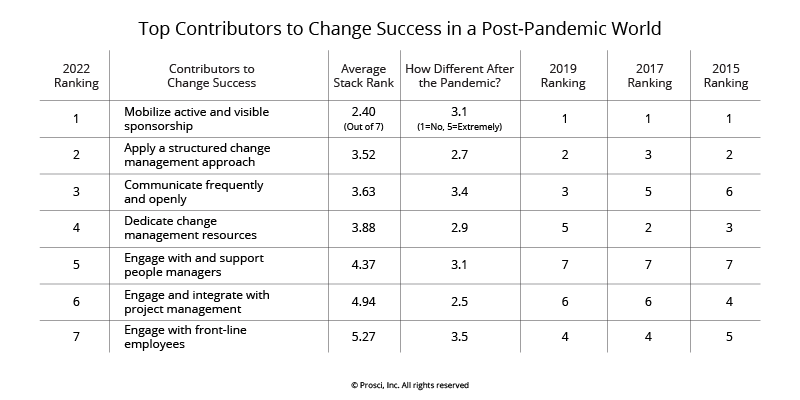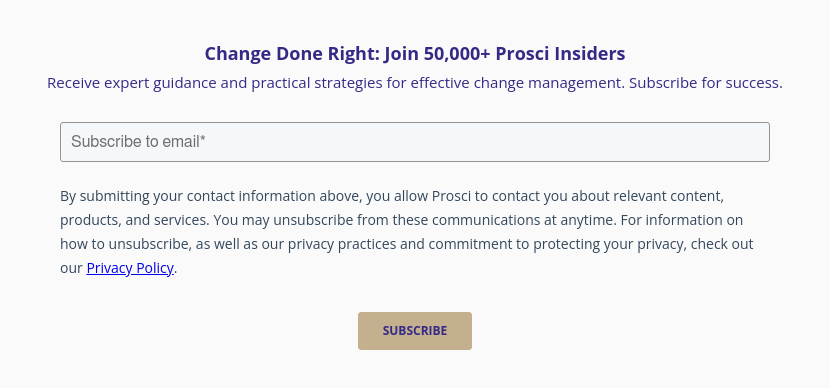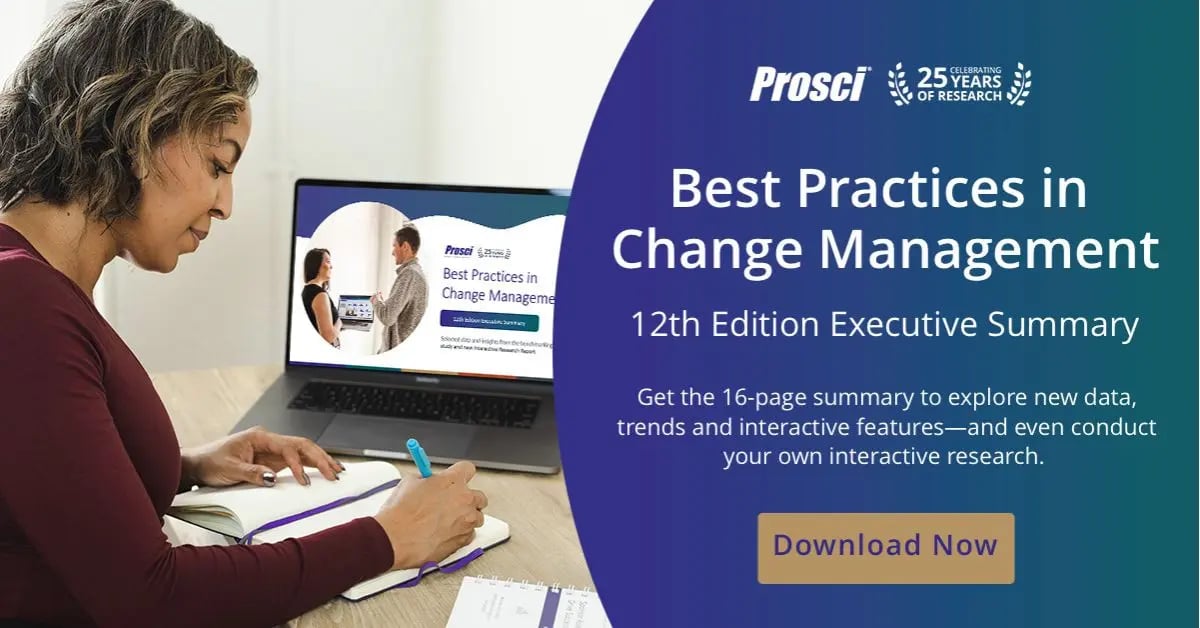

Collaboration & Connection
Themes: cohesion, collaboration, commitment, community, connection, networking, teamwork
I am still amazed at how “connected” people stayed and became even in the face of remote collaboration. As we step beyond pandemic response and into formulating the future of work, facilitating great hybrid teams will be crucial. The notion of teamwork is interesting here. Not that teamwork had never been important, but teamwork without being able to walk down a hallway, have a coffee with somebody, or go out to lunch together. The intentionality around forming that foundation of teamwork is even more important now.
“Working as a Change Management team rather than as a single CM individual with specific expertise.”
“People are becoming aware of alternatives in terms of how to work together.”
“Stay connected and keep communicating – out of sight out of mind is really true these days.
It’s much easier to get siloed than ever before.”
Success Measurement
Themes: measurement, success, accountability, outcome focus, definition of success, success narrative, success stories, output.
Establishing this focus on success and success measurement is one of the most interesting of the emergent contributors to success. Prosci’s enhanced methodology, released in April 2021, really elevated the concept and focus on change success as a result of data and insight from real practitioners. The pandemic accelerated the focus on outcomes significantly. This emergent contributor aligns with our work related to definition of success, and what it means to measure and track outcomes in a meaningful way.
“Clearly articulating goals and setting distinct milestones is now something emphasized in our org.”
“Manager competence, and performance management against this competence rather than functional/operational competence.”
“The amount of change and the complexity of change is making it impossible to expect to 'fly by the seat of our pants' anymore; link project success rates to application of change management.”
“People adoption metrics and dashboards provide objective feedback on adoption and proficiency. Shift in role and behaviours of line managers.”
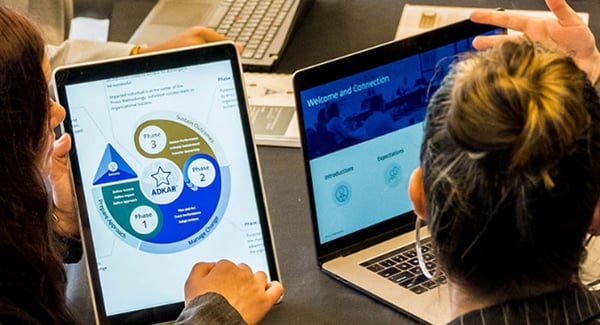
Portfolio & Saturation
Themes: portfolio, pace, prioritization, fatigue, saturation
What's emerging about saturation? Today's portfolio of change is being executed against three years of exhaustion, along with a backlog of changes that were postponed and strategies that are once again gaining traction. Successful organizations in the future will be those who can effectively manage the pace and velocity of change in the organization to stay ahead of where they need to be without putting their people in the rearview mirror.
“Understand that there is real change fatigue that exists from people’s life experiences outside of work that may be impacting willingness to participate as their roles identify would be most helpful.”
“Understanding the need for strategic change management to mitigate change fatigue. I mean that deliberately looking at all the change in the business unit to determine how to implement large, disruptive changes. People are burnt out personally and professionally.”
“People are change fatigued and we must acknowledge that and better management of the number and pace of changes.”
“Change resilience/change fatigue; lack of coordination across projects that impact the same stakeholders.”
Wellness & Mental Health
Themes: emotional intelligence, mental health, mindfulness, well-being, wellness, work-life
This contributor is entirely new. It’s not that wellness and mental health weren’t important before the pandemic, but it wasn't being acknowledged as such a critical role in how people are able to show up and do what they're called to do. Leaders might have approached change believing, “We'll just tell people what to do.” But after the exposure of humanity that took place in organizations—well, you can't unsee that. And once you really experience the people side of the organization and change, all aspects of helping people be successful are on the table.
“The realization that people sanity and mental well-being is crucial to overall organization health and performance.”
“First: Learn the lesson from the past and understand why it happened and evaluate impact.
Second: Answer the question what success means for individuals, companies, societies, world?
Third: Define the healthy limits between efficiency and satisfaction & happiness.”
“As I call it, the mental health reckoning and the new human value equation.”
“Work-life balance, importance of healthcare, family priorities.”

Hybrid Workplace
Themes: hybrid workplace, future of work, return to work, virtual
The hybrid workplace was the most identified theme overall before we pulled like themes together. Hybrid working is here to stay and includes a variety of locations and arrangements, including on-premises, off premises and combinations. How do we continue to navigate hybrid working and get better at executing in the new environment?
“Companies performing more SWAT analyses to determine if they should actually bring their
employees back into the office or continue to allow them to work from home.”
“Re-designing the reason for the return to the workplace.”
“Level setting what being ‘present’ means—that you don't have to be there physically in person
to be actively engaged with staff.”
“How to manage the changes to ways of working e.g., working from home part time as well as part time in the office. Working different days in the office depending on projects.”
“Be flexible and creative in your approach. Consider the additional challenges with many of us working from home.
Try to incorporate more of the human, whole-person (not just who we are at work) aspects
where possible to build stronger connections and trust in a more virtual/hybrid world.
Build stronger connections between UX and CM where possible.”
Prosci Research on
Emergent Contributors to Change Success
After detailed analysis of all the emergent contributors, we arrived at the bar graph below. Organizing the top themes by their relative size and importance, we segmented them according to the aspects of change management they affect: organizational, initiative, interaction, role and people.
The graphic below shows how the emergent contributors to success, including those highlighted above, were organized the categories in the analysis for the report. Organizations positioned to succeed in the future will need to incorporate these new and increasingly important contributors to success at the organizational level, the initiative level, the interaction level, the role level, and the people level.
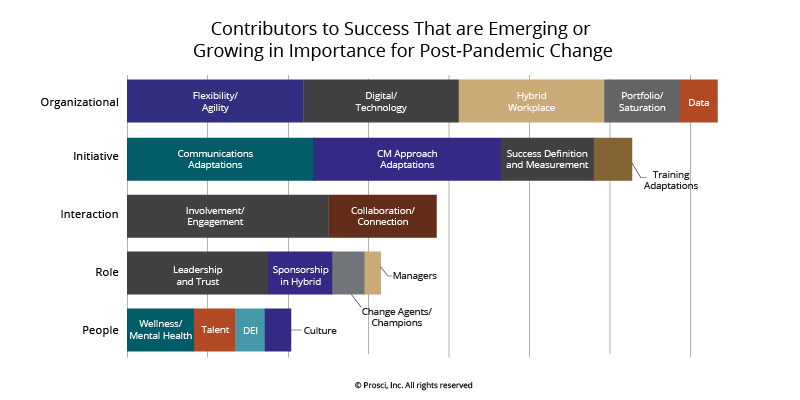
The full and final results are available in Research Hub as part of the Top Contributors to Change Success in a Post-Pandemic World research report.
25 Years of Prosci Research
Prosci research enables our clients and the change management community to improve results and outcomes from projects and initiatives—and build the change muscle organizations need to thrive in today’s evolving marketplace. Whether we’re digging into top contributors to change success, Best Practices in Change Management, or any number of change-enabling studies, we’re doing it with your needs in mind. During this, our 25th year of Prosci research, I encourage you to check back often to learn how we’re elevating our research process, studies, digital tools and more.


